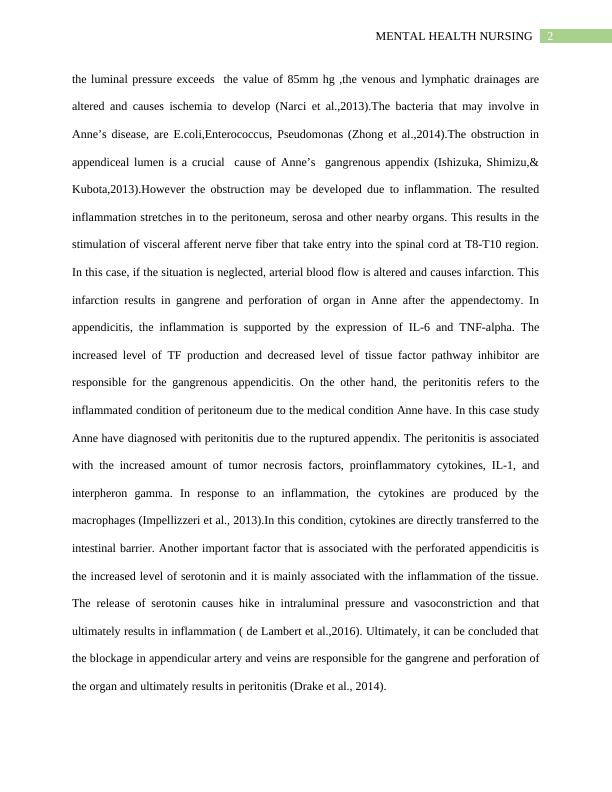Pathophysiology and Nursing Care for a Patient with Appendicitis and Peritonitis
9 Pages2715 Words490 Views
Added on 2023-06-07
About This Document
This essay sheds light on the case study of Anne who is a 10 year old girl and she is has admitted to the hospital with severe right iliac fossa pain. According to the symptoms, doctors have suspected that it might be appendicitis. After appendectomy, she was diagnosed again with peritonitis, which is gangrenous in nature. Due to the infection, she had been receiving the IV antibiotic treatment. The pathophysiology of the both the diseases are discussed in this essay. Along with this, the nursing care that should be used to treat Anne had also been highlighted. The family centered care, effect of hospitalization on the Anne is also highlighted in this essay.
Pathophysiology and Nursing Care for a Patient with Appendicitis and Peritonitis
Added on 2023-06-07
ShareRelated Documents
End of preview
Want to access all the pages? Upload your documents or become a member.
Nursing Assignment: Pathophysiology Case Study
|7
|2578
|98
Essay On Pathophysiology | Case Study Of Anne
|9
|2410
|206
Appendicitis Case Study: Pathophysiology, Growth and Development Theories, and Family Centred Care
|10
|2724
|417
(PDF) Clinical Approach in the Diagnosis of Acute Appendicitis
|9
|2652
|57
Case Study on Appendicitis
|8
|2307
|457
Nursing Case Study: Pathophysiology, Developmental Care, Family-Centered Care, and Impact of Hospitalization
|9
|2463
|154



